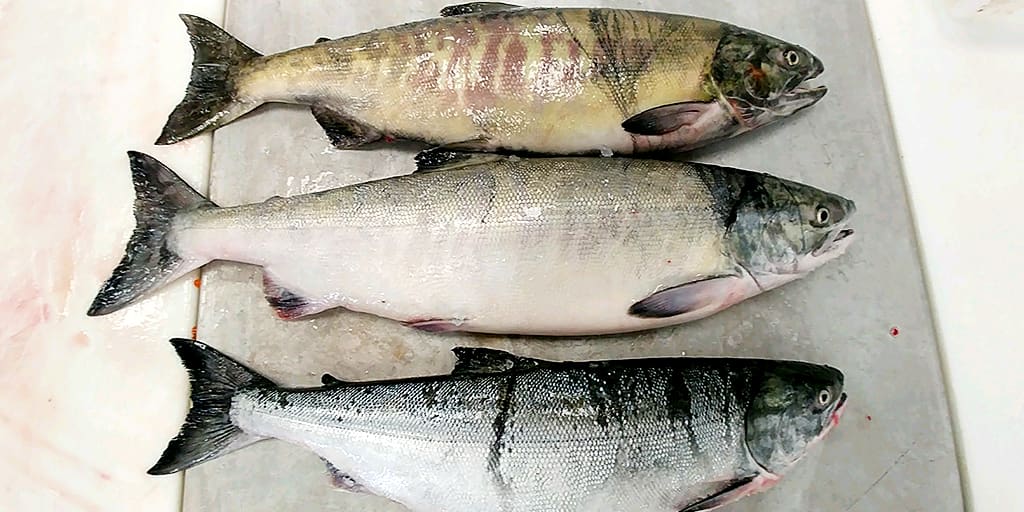Getting Chummy: How We Grade Our Chum Salmon
NewsWant to know how we grade our chum salmon? Let's dive in!

Want to know how we grade our chum salmon? Let's dive in!
Would you believe that these three fish are all the same species of salmon? They are all at different phases of spawning, but they’re all Oncorhynchus keta, better known as chum salmon! In a year where chum is one of the most abundant salmon species, we thought we’d help our readers learn to appreciate the value of chum salmon at every phase of its spawning journey.
The majority of the commercial chum fishery favours chum that are closer to their spawning grounds, because they can catch a lot of fish upriver in a shorter amount of time and receive better money for the highly-prized roe than for the meat. Because of this, if you try researching photos of chum at different phases of their spawning cycle, you won’t find much!
We spend a lot of time with our fishermen grading our chum to be sure we use each fish where it can be best appreciated! When our fishermen send in their totes of chum salmon from the fishing grounds, we personally take them through the processor ourselves, hand grading each fish to be sure they are made into the right products.
The silverbrights (the fish pictured at the bottom), in the marine-phase of their spawning cycle as well as some of the fish like the one in the middle (just slightly farther along their spawn cycle) are used for fillets providing they still have firm, high-quality meat. Because these are the youngest salmon, their meat is firm, flavourful, and perfect for fillets. In fact, out of all five species, this salmon was often chosen as a staff favourite in a 2016 side-by-side blind taste test!
Fish that are closer to their spawning grounds, like the top one, are usually selected out for smoking and are considered highly valuable for their roe. The meat of these is still very good, but it’s beginning to lose that flavour and texture that make the others so good for filleting. But the slightly softer and milder flesh of these salmon is an advantage for smoking! It makes your smoked salmon tender, not tough, and it allows the smoke flavours to shine through. The meat of chum salmon can vary from a deep orange-red through to a very pale pink, but the colour of the meat has nothing to do with where it is in its spawning cycle nor with its flavour. These are just variations within the species.
The level of grading and careful hand selection that is pictured above isn't something you'll find outside Skipper Otto! Often when you find chum salmon in the grocery store, its skin has been removed or is hidden on the back of the package so you can't see how far along the spawn cycle it is. And often that fish is very late in its spawn cycle so that the company can get the best value for the roe. This also means that the meat will be soft and not very tasty. This lack of transparency earns chum salmon a poor reputation -- one we want to see changed!
We believe in reducing waste and making the best use of what the ecosystem provides each year. We love that our members understand the importance of eating with the ecosystem and that they trust us to make the best choices about what to catch, how to handle it, and how to preserve it for them. It's what makes our model truly revolutionary and what ensures we will have abundant, sustainable Canadian seafood for our families for generations to come.
Inspired to learn more about chum salmon? Read another blog post about why it’s a favourite at Skipper Otto!
